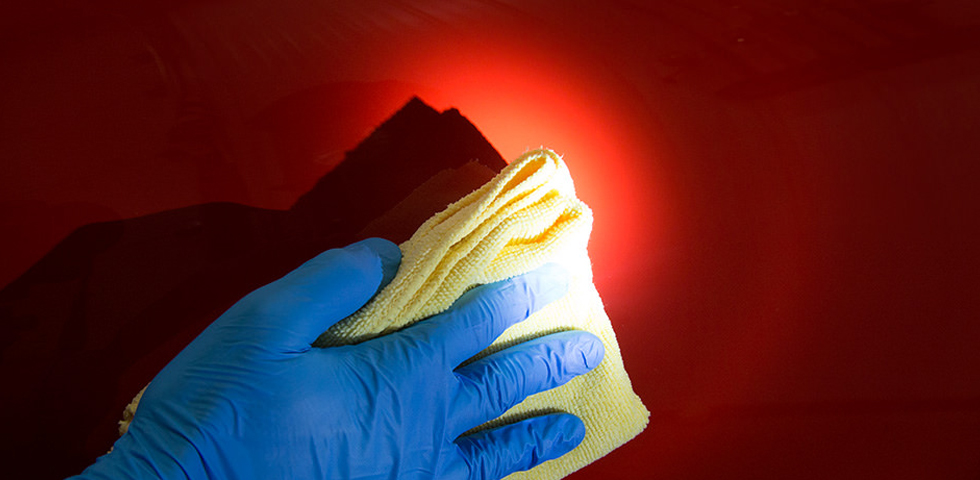Here’s my final of 3 planned articles describing the application of the few coatings we use regularly. The article on 22PLE VX3 was first, followed by CarPro CQuartz and finally my take on Optimum Gloss-Coat. As mentioned, these 3 coatings are what we use on a regular basis when not using a pro-only coating, such as Optimum Opti-Coat or CQuartz Finest. We mainly use VX3, but do regularly reach for Gloss-Coat (GC) as well.
The application of GC is very similar to VX3, almost the same to be exact. After applying, GC starts to dry/haze…
Like 22PLE VX3, it gives us a “rainbow effect” and shows up well on almost any paint.
Unlike VX3 however, this doesn’t last long. Gloss-Coat has the characteristic of “self-leveling” like OptiCoat, which makes it very easy to use. This not only helps if you don’t fully wipe off a small section when removing it because it will basically disappear, but also helps in timing the removal of it. Upon initial application, the entire panel shows up as colorful, like in the image above. As time passes, the areas where it was applied thinner start to dry and self-level, whereas the high spots show up as colorful…
I would still recommend timing the initial section or two, but the self-leveling aspect of it will tell you when it’s time to remove. Once you get the timing down by using a stopwatch, start to check exactly how much of the coating has disappeared on the surface. I would say once about 50% of it is gone, it’s time to wipe off soon after. This isn’t an exact science, but it’s a great indicator as to when it’s safe to remove when you don’t have access to a timer. Usually the time where we remove is in that 3-5 minute range, but in this situation I let it stay on the paint for about 7.5 minutes, yet it still wiped off effortlessly…
When removing Gloss-Coat, you want to avoid dragging a dry towel across the surface too much. I always use one side of the towel to wipe down the entire panel once, as a general wipe to remove most of the remaining coating. Then, with the 2nd side and while there’s still residue to be removed, I once again go over the entire panel. What this does is ensure that my towel stays “primed” with the coating residue and I’m not using a dry towel on a dry coating that’s in the middle of curing.
To better explain this… You want to do the opposite of what you do when removing a regular wax or sealant (or even 22PLE VX3 for that matter). In the case of wax or sealant, you wipe off the residue, then switch to a clean side and do a final wipe just to make sure there’s no more residue remaining on the paint. However, with Gloss-Coat, the point is to lightly glide the towel over the surface to pick up any high spots of the coating without disturbing the layer that’s already fairly dry. That’s why it helps to only remove some with the initial wipe, then the rest with a final wipe. Otherwise, if you’re running over the dried coating with a dry towel, think of it as touching paint that’s not wet but just dried to the lightest touch. If you press it even slightly, you’ll leave a fingerprint, whereas with GC if you wipe it a bit too much with a dry towel, you’ll cause haze and marring. This may not self-level and you may end up having to let the coating cure for a little while, polish the entire panel and re-coat. No one wants to do that!
All in all I really like Gloss-Coat and have been extremely happy with it. I do prefer 22PLE VX3 more because it’s a bit more user friendly and can be fixed much easier if you leave a spot of coating on the paint, but Gloss-Coat is my close 2nd choice and highly recommended.
